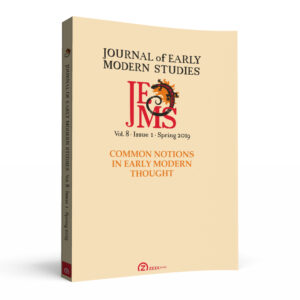CONTENTS
Melissa OTIS: “Location of Exchange”: Algonquian and Iroquoian Occupation in the Adirondacks Before and After Contact
- ABSTRACT: Despite westernized reports to the contrary, occupation occurred in the Adirondacks before and after European contact. Seasonal encampments scattered throughout the region were part of Iroquoian and Algonquian peoples labour for resource gathering that occurred year-round and for extended periods. The area also became a haven from colonial warfare for some Indigenous peoples; these communities dispersed by the mid-nineteenth century. Land pressures around the reservations of Akwesasne and Odanak forced some peoples to go elsewhere. A few who chose the Adirondacks settled there until White homesteaders moved nearby chasing away game. By the mid-nineteenth century especially Abenaki families settled around established tourist towns. I argue these are all examples of Indigenous occupation and we need to acknowledge this and how their occupation adapted over time.
Ira SARMA: The Hidden Spatiality of Literary Historiography: Placing Tulsi Das in the Hindi Literary Landscape
- ABSTRACT: Literary histories are narratives, just like the literatures they describe. They construct not only a temporal framework but also a spatial arena for literary events, movements and authors—frequently following extra-literary agendas. Using the example of Hindi, the official language of the Republic of India, the article analyzes the conceptualisation of space within literary history by comparatively mapping the space of a sixteenth-century Hindi poet, Tulsi Das, as presented in three histories of Hindi literature (by two Western and one Indian historiographer) from the periods of high colonialism, the struggle for independence and the post-colonial era. The highly divergent spaces that emerge show that space can never be an objective ‘given’ and also testify to the significance of visualising verbally produced spaces cartographically, so that underlying socio-political dimensions can be perceived.
Kyle RIISMANDEL: Arcade Addicts and Mallrats: Producing and Policing Suburban Public Space in 1980s America
- ABSTRACT: In the 1980s, teenagers came to dominate the last bastions of public spaces on the sprawling suburban landscape: the shopping mall and the arcade. Teenagers’ presence and the sense of their domination of those spaces from media and popular culture initiated new regimes of regulation with distinct consequences. Through tactics designed to combat the disruptive presence of teens, including use of closed-circuit video monitoring, professionalization of private security staffs, and strict municipal oversight, mall owners, concerned parents, and local political leaders created systems of insistent and pervasive policing of mall space. That surveillance not only undermined the very nature of the space as public but also nearly eliminated teens from shopping centers while facilitating their reintegration into the supposed safety of the home.
Ashkan REZVANI NARAGHI: Constructing Virtual and Material Public Spaces: The Cases of “We are All Khaled Said” Facebook Page and Tahrir Square during the Egypt 2011 Revolution
- ABSTRACT: This essay argues that Hannah Arendt’s conception of public space can contribute to the definition of material and virtual public spaces in contemporary social movements. By investigating Tahrir Square as a material public space and We are All Khaled Said Facebook page as a virtual public space during the Egypt 2011 revolution, this essay studies the relationship between these spaces and the events of the revolution. It shows that Arendt’s concepts of action and speech can theorize the virtual and public spaces of the Egyptian revolution.
Sean S. MILLER: An Examination of the Burgeoning Green Schools Movement in the United States Part Two: Threats to Success
- ABSTRACT: As the second installment in a three part series, this essay seeks further understanding relevant to the growing green schools movement in the United States. Specifically, the article examines two overarching threats that have the ability to significantly hinder the future growth and success of such a movement. First, the alarming rise of rampant media use by youth is examined as a potential deterrent to increased environmental understanding, exposure, and actions. Second, a general lack of inclusivity and related programming specific to diverse audiences is analyzed for its potential to erode the movement’s current and future base. Finally, the two threats are examined together through the lens of sustainable education and its potential to ameliorate such grave concerns in the near and long term.
Review
Lorna Lueker ZUKAS: Beijing Besieged by Waste 垃圾围城 Directed by WANG Jiuliang 王久良






